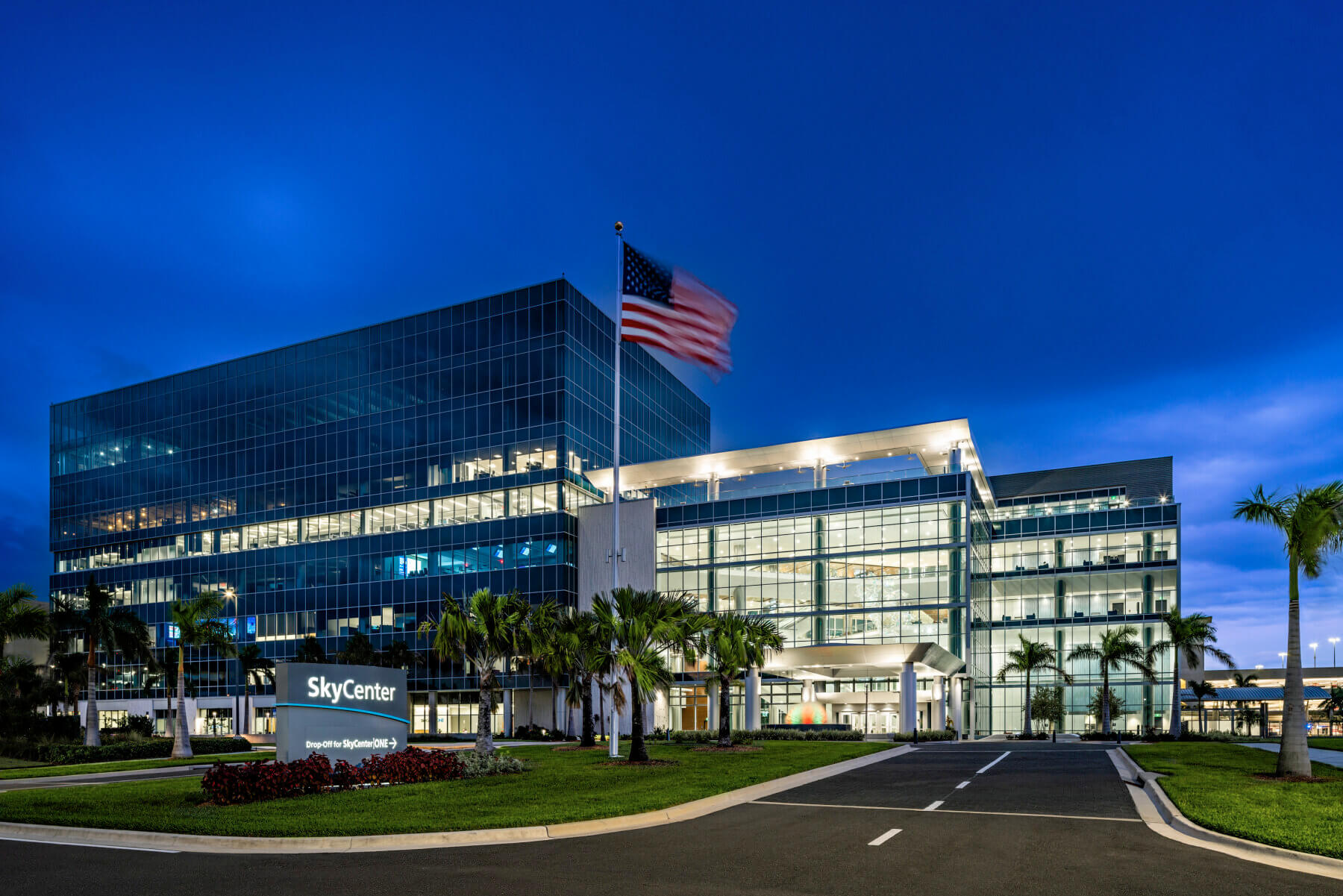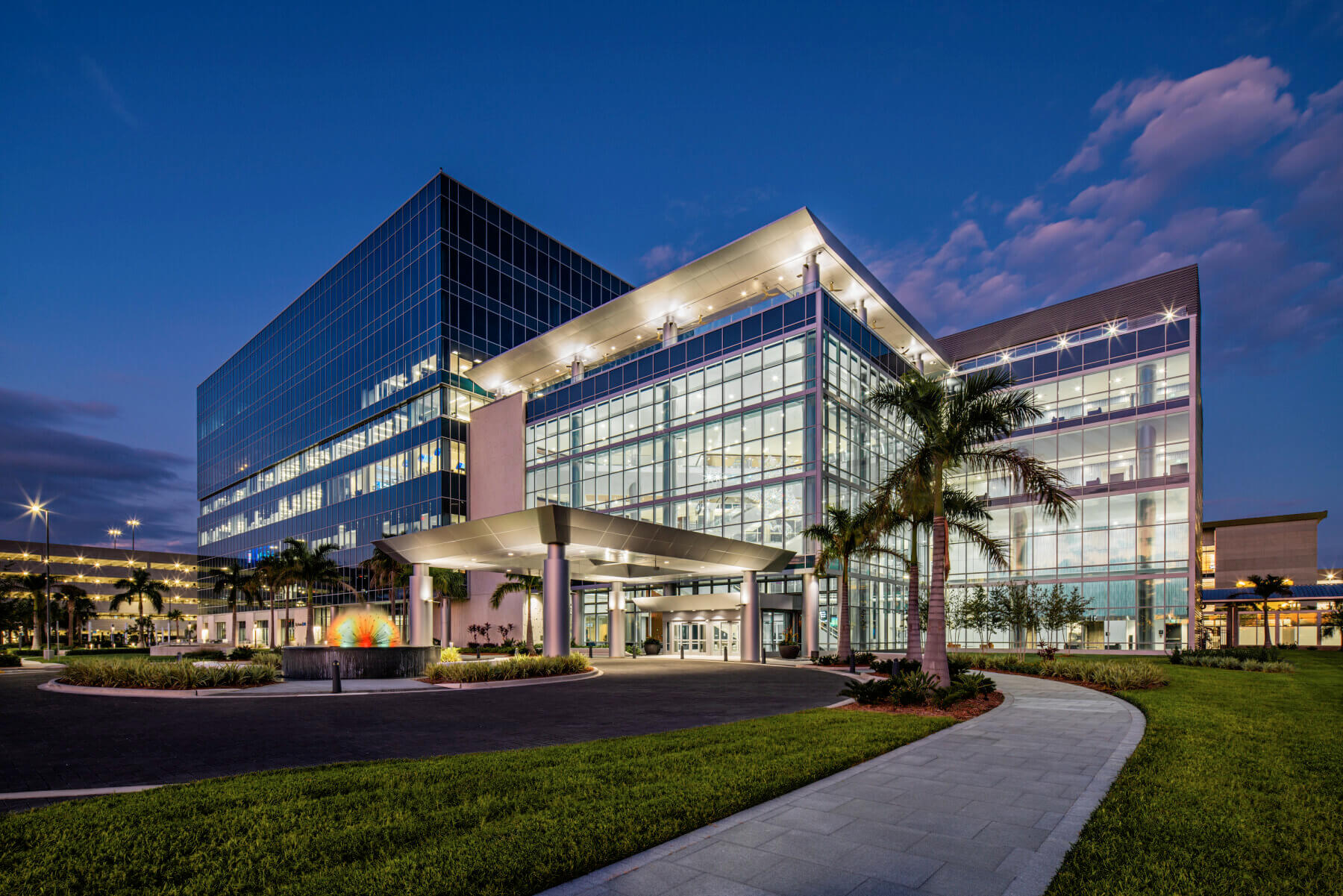
Decentralizing for the Future
By establishing the SkyCenter development plan, HCAA was able to relocate their administrative offices into a new office building and free up space for more critical airport operations at the main terminal complex. Gresham Smith helped engage a developer and design builder to develop SkyCenter One, the first nine-story office building at SkyCenter which houses three floors of Aviation Authority administrative offices. We also developed the programming and preliminary design of the Aviation Authority offices within the SkyCenter One office building, including the new Network Operations Center (NOC), Airport Operations Center (AOC) and Aviation Authority Board Room.
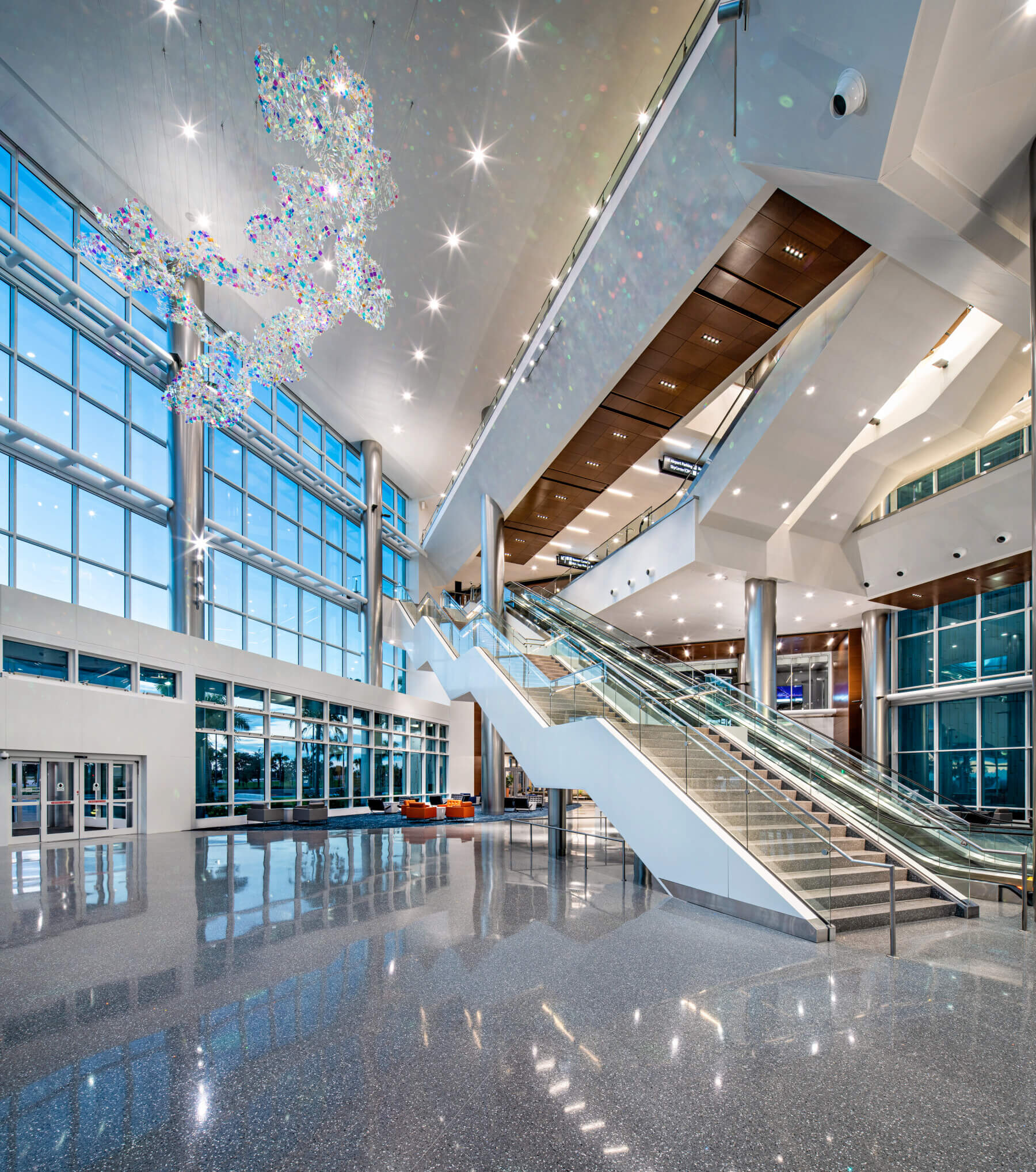
The Nerve Center
Gresham Smith served as the lead design consultant for the implementation of SkyCenter site improvements. This pivotal piece of infrastructure included:
- The atrium, which is intended to be the hub of connectivity for the SkyCenter development. At over 50,000 square feet, the atrium connects the SkyCenter One office building with a future ‘flagship’ hotel, and also includes a variety of workstations and seating arrangements for travelers on the go. The atrium also provides vertical circulation, which connects a new remote curbside, enclosed pedestrian bridge and a rooftop with 17,000-plus square feet of planted terrace with unmatched views of the TPA airfield and the waters of Tampa Bay.
- A relocated and enlarged cellphone lot, which includes improved restrooms, landscaping and multiple enlarged digital displays.
- Overall site planning for future hotels, retail and office buildings, utility planning, landscaping and signage for SkyCenter. The site planning also include a 1-mile exercise trail that wraps the SkyCenter perimeter.
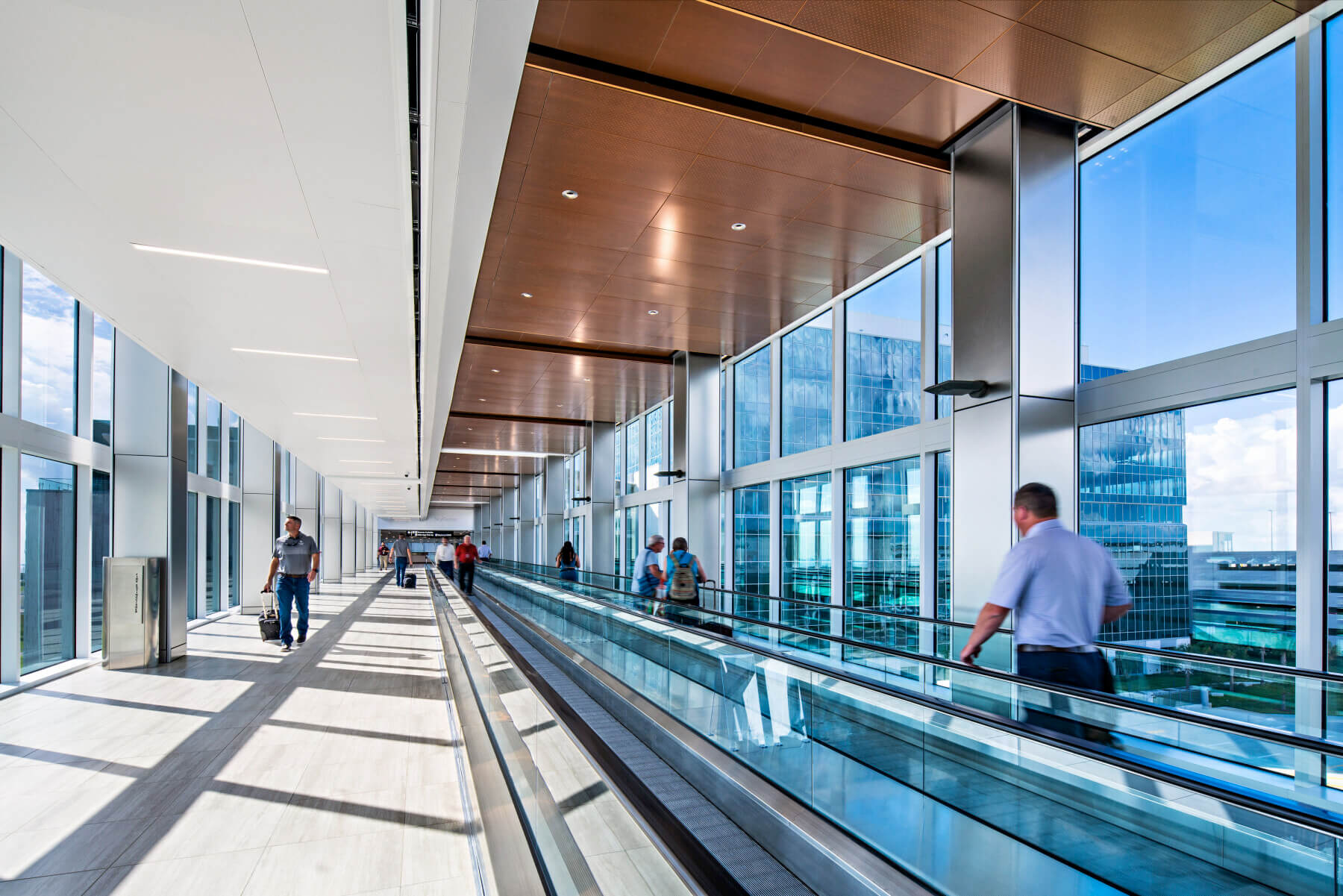
Connecting the “Aerotropolis”
Spanning over four lanes of traffic, the pedestrian bridge connects the atrium to the RCC. It offers SkyCenter tenants and travelers immediate access to the SkyConnect train for a short ride to TPA’s main terminal and access to the public bus curbside at the RCC.
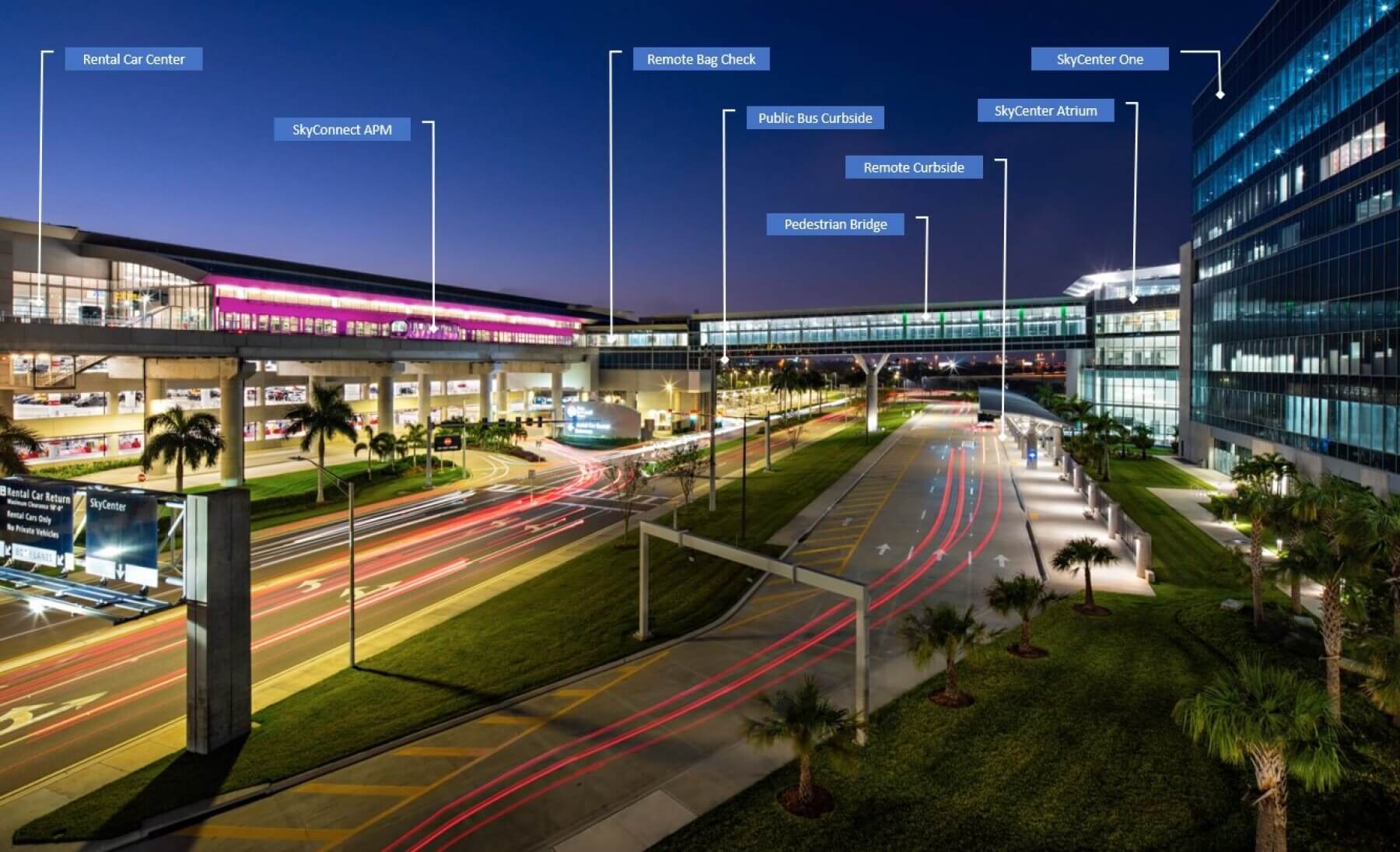
Strengthening the Weak Link
In lieu of picking up or dropping off at the main terminal curbside, which can be busy during peak times, the airport’s remote curbside at SkyCenter offers yet another way for passengers to access TPA. At 600 feet in length and three lanes wide, the new location adds capacity to help TPA keep up with traffic and provides a pickup and drop-off point for off-campus parking and rental car shuttle buses. This location also provides a “Plan B” should there be a traffic bottleneck at the main terminal. Customers utilizing the RCC, SkyCenter and the remote curbside have the added benefit of also being able to check bags remotely at the RCC.
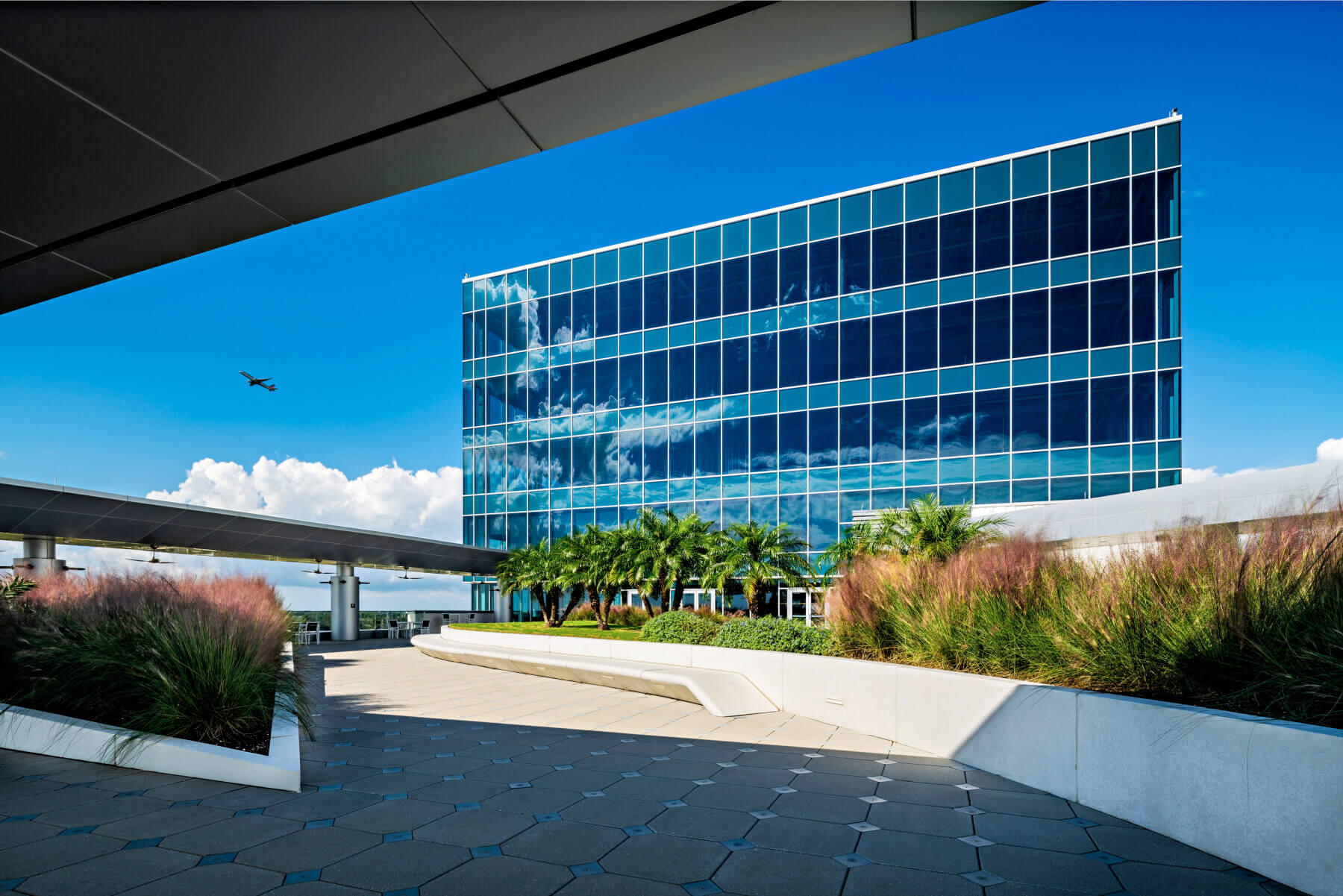
Evolution of the Airport Model
The SkyCenter project is part of the ongoing plan to continuously optimize and extend the shelf life of the main terminal by utilizing remote and underutilized land, and by leveraging connectivity to the main terminal via the SkyConnect train system. Creating improvements for the present, as well as accommodating expansion and future growth, the SkyCenter development brings TPA’s vision of a highly connected airport city to fruition and affords HCAA opportunities to diversify their revenue sources while simultaneously expanding offerings to customers and Tampa Bay.
